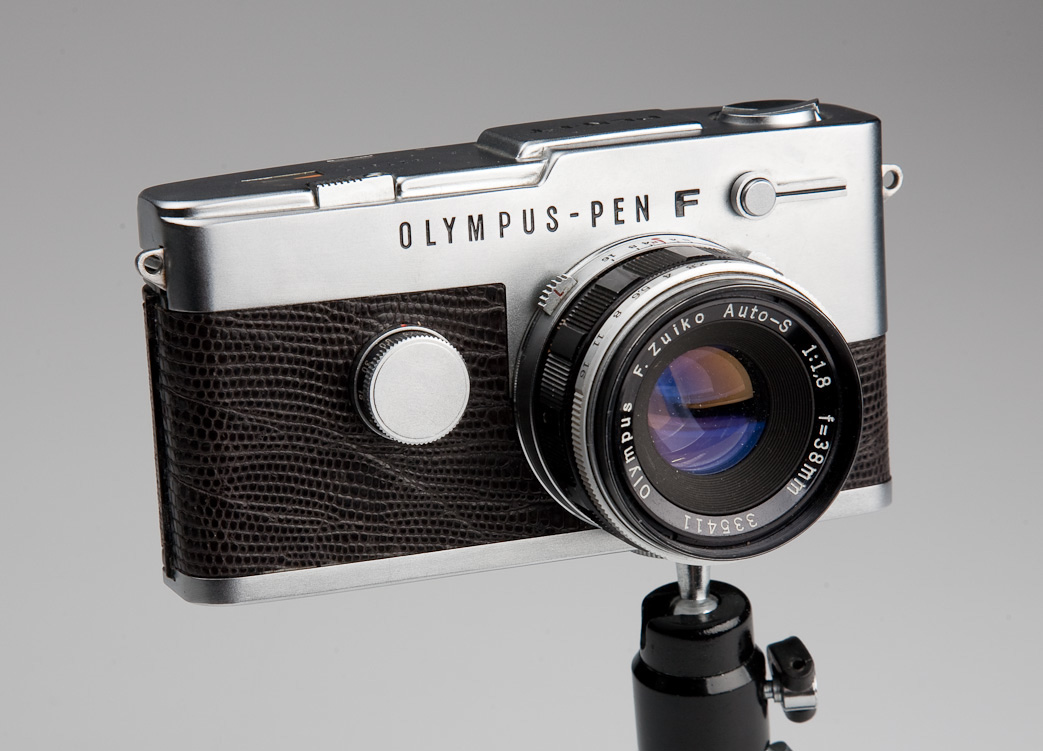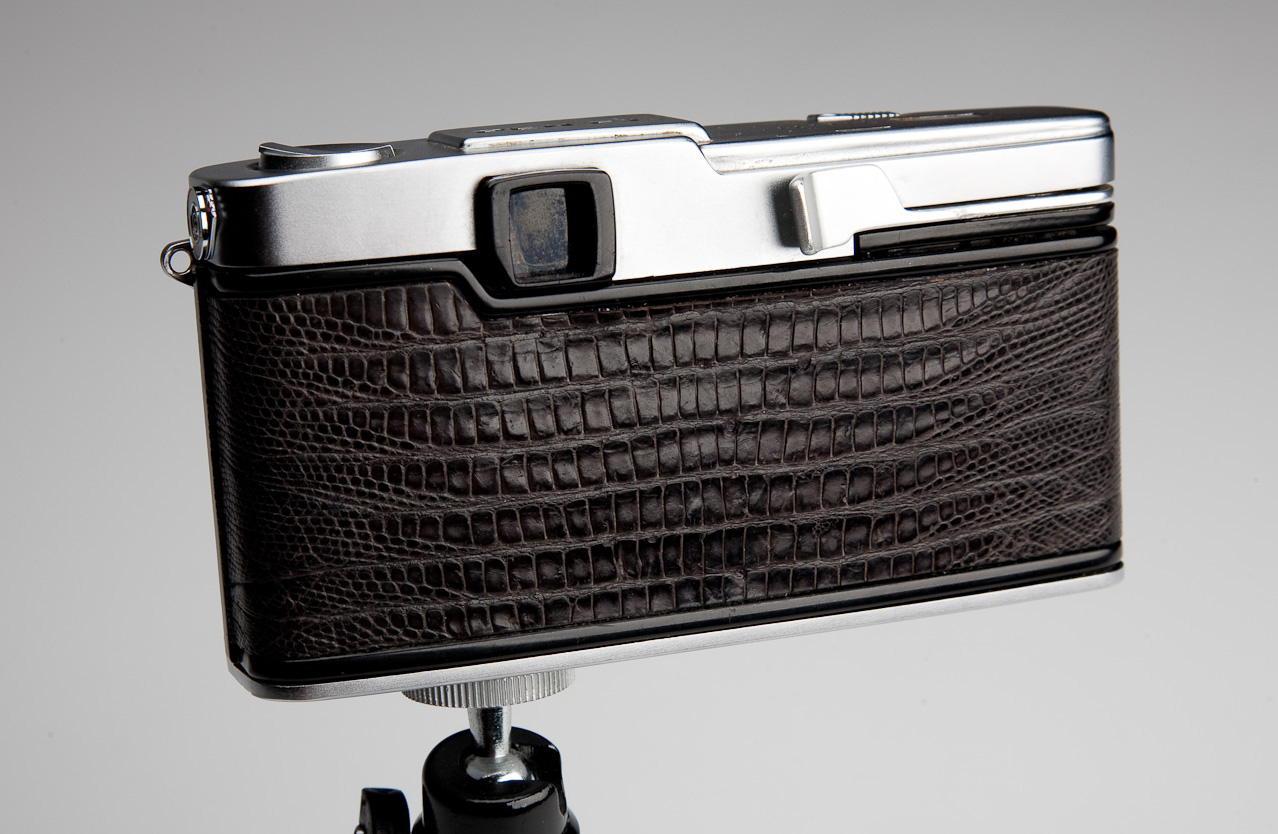If you are fortunate enough to have a long relationship with photography you may find you have certain recurring obsessions that you can neither explain or fully control. At least I do and half-frame cameras are one of those obsessions for me.
I first was exposed to this obsession in 1987. I was interested in making use of grain in my images (another obsession) or actually making the grain texture a significant element. Among other things I was working with a photo etching process and experimenting with finding a grain pattern coarse enough to auto-screen, to make it’s own halftone dot, but I digress. A friend said “you should shoot with a half-frame, bigger grain” and pointed me to the work of Ray Metzker and his great photobook Sand Creatures. In his forward Metzger writes “...many experiences became a unity although each image is a fragment, a scene glimpsed en route and quickly sketched with a half-frame camera that passes for a tourist’s toy.”
© Erik Gould
Inspired, and although I didn’t know anything about these cameras but what little I had heard about Olympus Pens, I went looking. I found out that the F, FT and FV models are SLRs. I couldn’t see how that could be by looking at a photo of one but it got me curious. This being 1987 I couldn’t go online so I turned to the camera classifieds called Shutterbug. I found a listing for an Olympus FT with a 38mm 1.8 lens and I bought it.
© Erik Gould
When the camera arrived I was impressed by it’s weight and build quality, this was no toy. These cameras have a unique shutter and because they are oriented in a vertical or portrait mode the mirror and focusing screen are turned sideways, so there is no pentaprism hump on the top of the camera. If you are considering buying one don’t be tempted by the low price on a camera listed with a shutter issue unless you have a repair person lined up with experience with these models. It is a very different shutter and some techs won’t touch them, even worse some may be willing to try for the first time on yours. A repair will be likely be expensive in any case.
© Erik Gould
Once I started shooting I found the grain I was looking for, but I quickly realized that there was much more to interest me with the Pen. Shooting 35mm film in a half-frame format brings it closer to it’s cinema roots, both physically with the frame size and orientation and stylistically. Viewing my first contact sheets I could sense a flow from frame to frame and across the page that seemed cinematic. There was movement and energy and although these were still frames and not the flickering illusion of continuous motion that is a movie it seemed easy to make connections. When I showed my contact sheets around many people remarked that they “looked like little movies.” The vertical format of each frame seems to allow connections from one to the next. These connections could be literal as in the case of a panorama (Eben Otsby on Flickr dubbed these “penoramas”). The connections could be more symbolic or ironic, suggesting relationships between people and things. I found there could be a feeling of the passage of time and of movement through space. I started to explore all of these, printing images in twos and threes or more, going on up to a full roll. I did a mock up of an Absolut Vodka ad which sadly I no longer have that was a single color contact sheet of a roll of film.
© Erik Gould
The Pen FT quickly became my go everywhere camera and I’m happy to say it survived the experience. It was a prime tool for me through my drunken career in grad school, going to bars (another obsession) with me where I shot countless rolls of Recording film of friends and strangers. I continued to use it regularly, shooting it on some assignments for indy arts magazines in the 90s. Always I was using multiple frames. I own plenty of cameras that can shoot single frames but only a half frame can give me the challenge of finding just the right sequence in camera and putting it one strip of film.
© Erik Gould
I’ve added other half frame cameras over the years and each have unique qualities. I’ve had several Pen EE and EES cameras with their automatic eyes. If I want to shoot on the street (although I never consider myself a street shooter) I like the simplicity and quickness of zone focusing and auto exposure. Like Ray Metzger sometimes it’s an advantage to have a camera that people don’t take seriously. I have a Pen S, which I really like. It’s very close to the original Pen. Scale focus, fully manual exposure, the back comes off like many cameras of that era and it has the quietest shutter of all the Pens in my experience. The smaller Pens also offer a narrower frame spacing compared to the FT, which can be great when shooting multiples.
© Erik Gould
I have also acquired some non Olympus half frames. The Russian made Agat 18k, a little plastic camera that shoots in landscape mode. Fun if you are willing to live with the risk that your film might be ripped to shreds at any point. Also the Russian Chaika 3, roughly made but workable. It features a lens that can be unscrewed to allow it to be used on an enlarger, so the story goes. I also have an American made Mercury II. This Buck Rogers looking camera has a rotating shutter that makes a great noise and spins the shutter speed dial when it fires. It also has what must be the most convoluted exposure guide ever affixed to a camera. I defy anyone to follow its recommendations and still manage to take a picture before their subject died of old age.
© Erik Gould
For a good user camera, for me it has to be Olympus. I bow in gratitude to Yoshihisa Maitani, the brilliant Olympus camera designer. It is a testament to his genius that these cameras continue to aid and inform the work of photographers like myself so many years after they were first offered.















